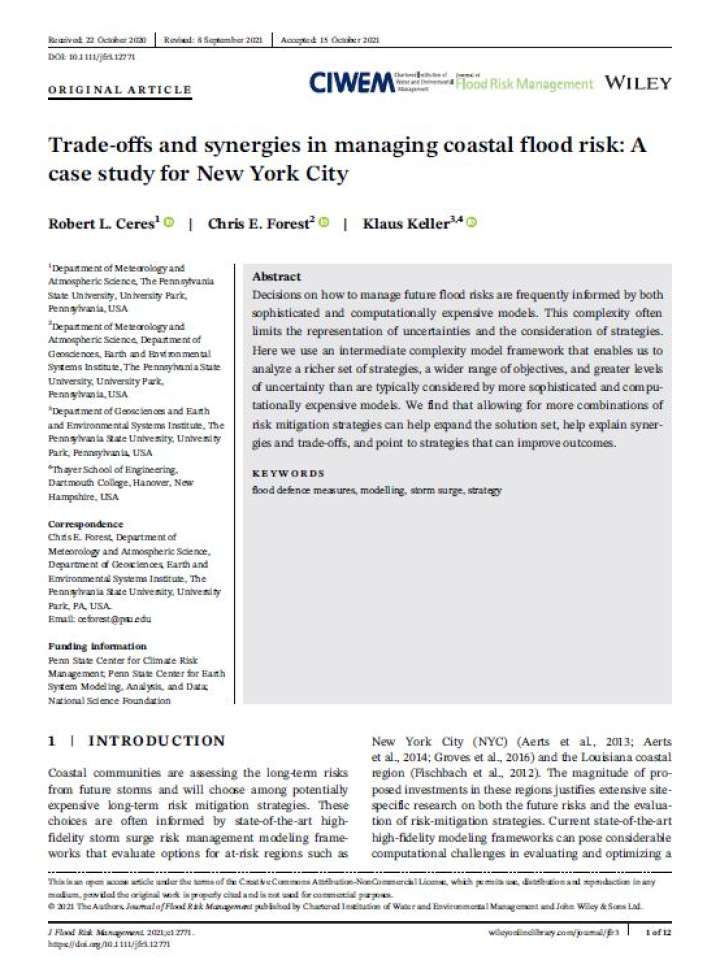Trade-offs and synergies in managing coastal flood risk: A case study for New York City
Decisions on how to manage future flood risks are frequently informed by both sophisticated and computationally expensive models. This complexity often limits the representation of uncertainties and the consideration of strategies. In this paper the authors use an intermediate complexity model framework that enables them to analyze a richer set of strategies, a wider range of objectives, and greater levels of uncertainty than are typically considered by more sophisticated and computationally expensive models. The authors find that allowing for more combinations of risk mitigation strategies can help expand the solution set, help explain synergies and trade-offs, and point to strategies that can improve outcomes.
The authors highlight that the island City On a Wedge (iCOW) framework can be useful to decision-makers in several ways. First, it can help to examine “real-world” strategy options over a wide range of uncertainties to stress test these strategies. Second, it can be used to analyze a larger set of objectives. Third, when used in combination with state-of-the-art solutions where multiple objectives have not been considered or a multi-objective optimization has not been performed, the iCOW framework may be able to point out potential Pareto improvements to these candidate strategies. Last, but not least, given the complexity and large costs, many coastal communities lack the resources required to implement state-of-the-art storm surge risk modeling frameworks. In these cases, the iCOW framework can be employed relatively inexpensively and quickly to support coastal community decision-making.
Explore further
